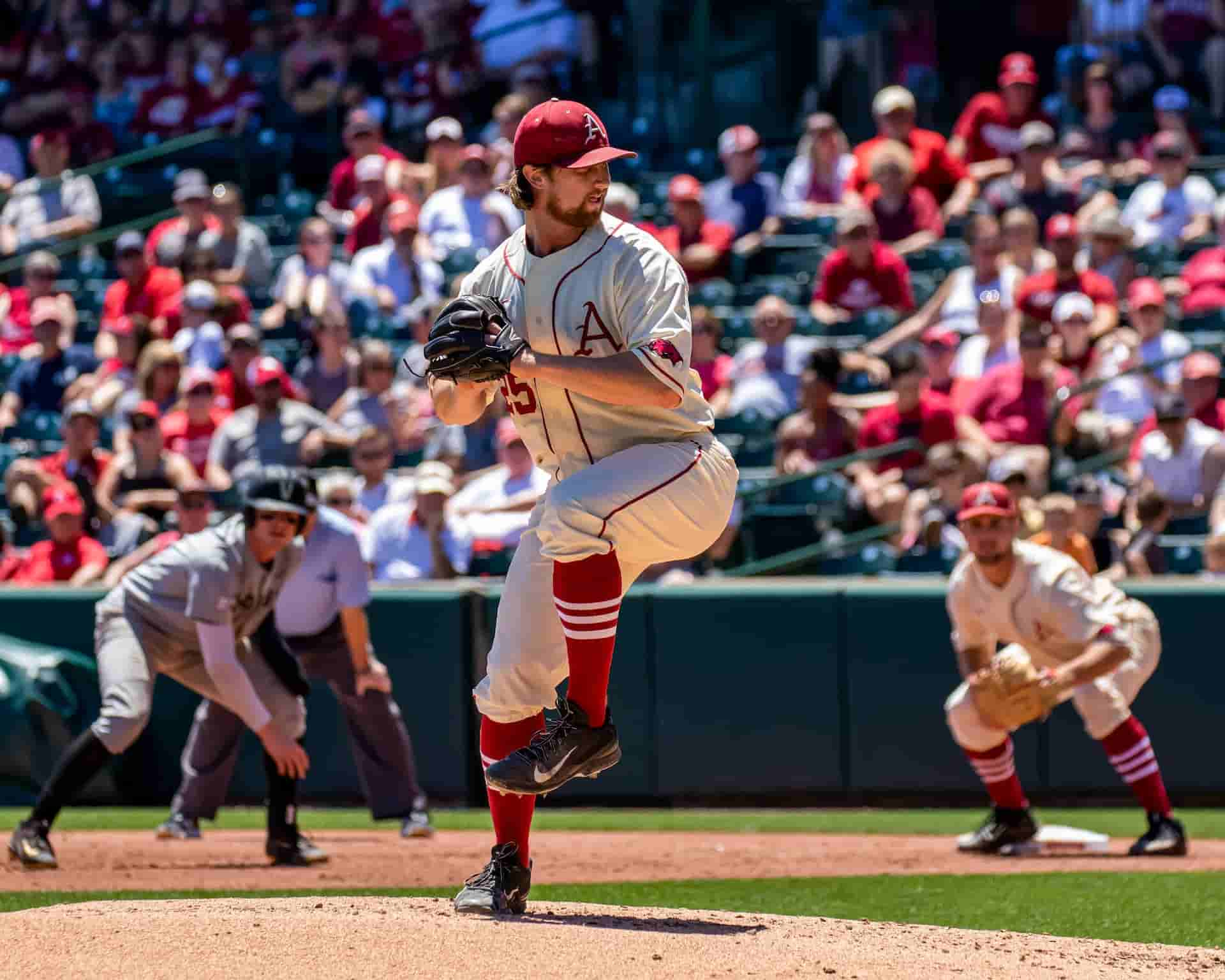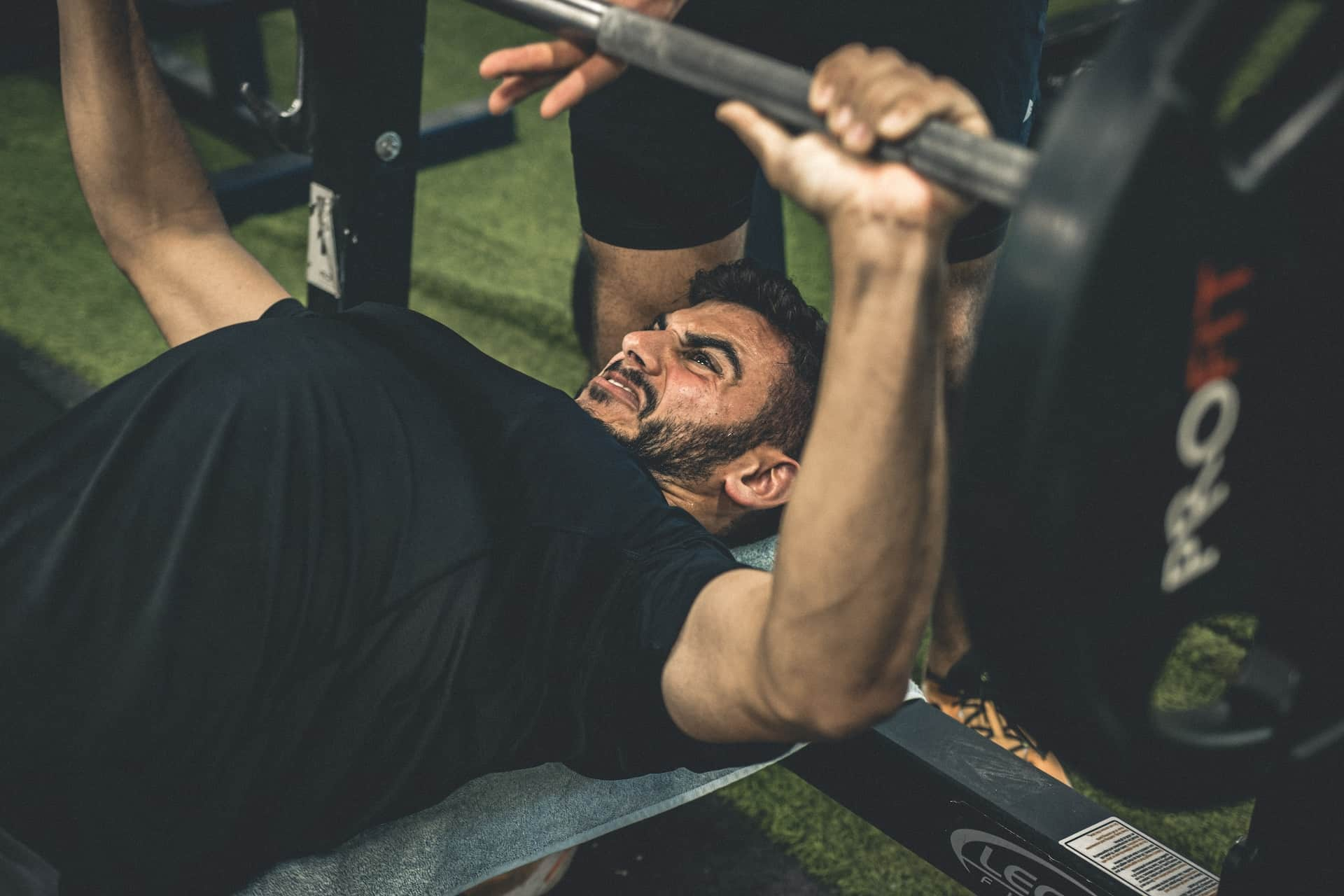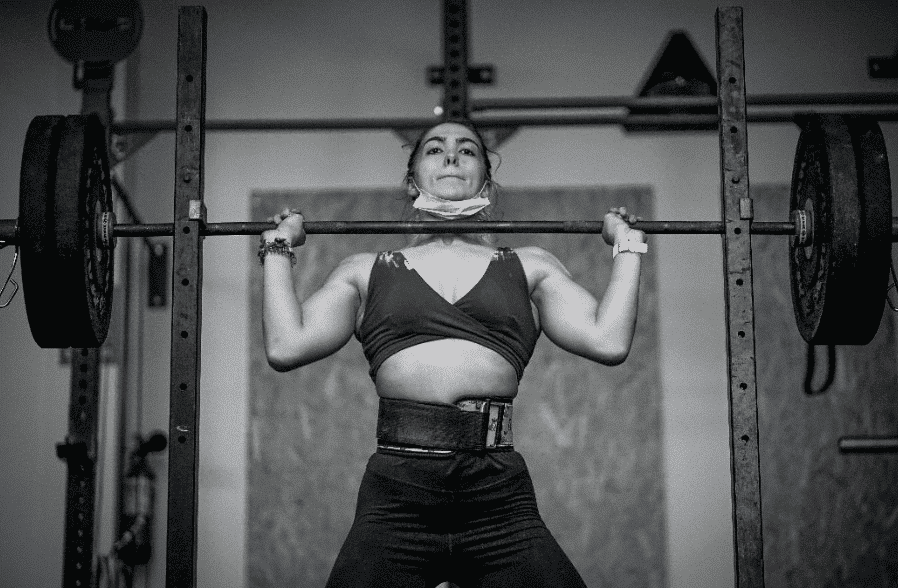27 de September de 2023
How to Help Your Athlete Achieve a New PR With VBT
Relationship Between VBT and PR in Both the Gym and Any Sport Discipline

Strength training is the essential tool to achieve a new PR, which stands for ‘Personal Record.’ This term refers to the measurement of our best lift to date, whether it’s because we’ve lifted the maximum number of kilograms for a single repetition, completed more repetitions with the same weight, or maintained the same number of repetitions as before but with a higher weight. The ultimate goal of achieving a new PR is to reap the rewards of our training sessions.
If we keep surpassing records regularly, it means that the training we are conducting is useful and effective. A lesser-known but also effective tool for achieving a new PR is velocity-based training (Zhang et al., 2022). If your athlete lifts 100 kg in the bench press at 0.5 meters per second, we can say that they have improved if they can move the same weight at a faster speed, for example, at 0.4 meters per second. When you move a load at a higher velocity, you are stronger, as demonstrated by one of Newton’s laws: force equals mass times acceleration. If the mass remains the same but the acceleration is greater, the force is greater.
Therefore, there are many different ways to achieve a new PR when it comes to strength training.
- Lifting more weight for a one-repetition maximum.
- Lifting more weight for the same number of repetitions.
- Completing more repetitions with the same weight.
- Moving the same weight at a higher velocity.
Beyond these four ways of achieving a new PR, there are numerous ways in which each sport allows for personal records. Whether it’s running faster in the 100-meter sprint, jumping higher, hitting a ball with more speed, or any physical skill, personal records can be applied to records in every sport. Strength forms the foundation for all these records. Strength is what enables us to run faster, jump higher, and hit harder. Therefore, if we achieve a new PR in strength, we have a better chance of setting a PR in our sport.
Velocity-Based Training (VBT) is a method that has changed the paradigm of strength training (Balsalobre-Fernández & Torres-Ronda, 2021). Prior to the advent of devices like the Vitruve velocity meter, training prescription was done in a closed manner without monitoring an athlete’s individual fatigue from previous sessions or knowing the fatigue that each session would induce. By obtaining velocity data for each repetition, along with other variables like power, range of motion, and more, we can better adjust the loads and reach new PRs with greater precision and effectiveness (Dorrell et al., 2020).
Self-Regulation with VBT to Achieve a New PR

Velocity-Based Training (VBT) is a self-regulation method that goes beyond an athlete’s perception, as it involves measuring variables such as velocity using a device like the Vitruve velocity meter (Held et al., 2022). Knowing the velocity of a lift opens up new possibilities in training, allowing you to achieve a new PR much more quickly and efficiently. The data on lifting velocity may seem insignificant, but it provides crucial information about our theoretical maximum weight for that session, the accumulated fatigue, the impending fatigue, how close we are to muscle failure, and more (Muñoz de la Cruz et al., 2023).
When training in the traditional manner without a velocity measurement device, we lack precise knowledge of these details, and this lack of information can slow down our progress. These are the reasons why Velocity-Based Training (VBT) is considered superior to traditional training for achieving a new PR (Liao et al., 2021).
Personalized Training for Each Athlete
Every athlete possesses unique characteristics that can even vary from day to day. VBT allows you to achieve a new PR by precisely using the daily load that the athlete needs, thus adjusting volume and intensity to their requirements at any given moment (Banyard et al., 2021). You’ve probably experienced days when you started warming up, and the weights felt much lighter, and you followed your planned routine, but you felt you could have pushed a bit harder. Conversely, you might have had days when during warm-up, the loads that were typically easy for you suddenly felt significantly heavier. You had to complete the scheduled routine, but it was challenging to finish.
The use of velocity measurement devices like Vitruve can inform you during warm-up of your one-repetition maximum for that day. While it usually doesn’t vary much, there are days when it’s evident that you’re much stronger or weaker, and it’s crucial to adjust the load for those days. The key detail explaining why VBT enables reaching new PRs is that all training sessions are tailored to the necessary variables to generate maximum adaptations while controlling fatigue effectively.
Moving Away From Empty Training and its Consequent Fatigue
How many repetitions do you do in a set? You might think, “As many as the program prescribes.” Traditional programs often prescribe fixed sets and repetitions, such as the classic 5×5. This type of method results in a lot of empty training, which refers to the extra work we do that, at best, doesn’t add anything to our progress and, at worst, detracts from it. When using VBT, it’s the velocity of each repetition that determines when we’ll end the set, so there won’t be a fixed prescription of sets or repetitions (Zhang et al., 2023).
Instead, we will train until we reach a predetermined velocity loss. The greater the loss of velocity between repetitions and between sets, the more fatigue we accumulate (Galiano et al., 2022). The crucial detail in this aspect that helps us reach a new PR more quickly is that we will only perform high-quality sets and repetitions, eliminating those that generate more fatigue than benefit. When programming velocity loss, we can train until our velocity measurement device indicates that we’ve lost, for example, 10% of velocity compared to the fastest repetition (Pareja-Blanco et al., 2020). At that point, we’ll stop the set and not do any more repetitions.
This approach allows us to train even daily and frequently reach our PR. If we manage fatigue very well, we can recover within 24 hours. More high-quality training, rather than quantity, will bring us closer to new PRs more frequently.
How to Help Your Athlete Achieve a Ner PR with VBT

Step 1: Obtain a VBT Encoder and Become Familiar with It.
The first step to achieve a new PR with VBT is to have a valid and reliable velocity measurement device like the one from Vitruve. While it is possible to measure the velocity of lifts for free with the Vitruve app, having the encoder makes it much easier logistically and provides real-time data, which mobile apps without a velocity measurement device cannot offer. This device easily attaches to the bar or load and provides you with real-time velocity data. How can we leverage this data to achieve a new PR? Let’s explore that in the following steps.

Step 2: Create a Load-Velocity Profile or Use a Predefined One to Obtain Your Daily One-Rep Max (RM)
Every athlete has a force-velocity profile (Lindberg et al., 2021). Ideally, you should dedicate a few minutes of specific sessions to calculate your athlete’s profile, or you can use predefined profiles included in Vitruve with execution velocities extracted from various high-quality scientific publications. This profile serves two purposes: first, to improve in the force-velocity zone where we are weakest, and second, during the warm-up of each session, we determine our maximum weight to lift at that moment.
Typically, one-repetition maximum (RM), or the maximum weight that can be lifted once, is estimated using incremental tests that generate a lot of fatigue and require a lot of time. Once obtained with the traditional method, we use this RM every day, without considering that this measure is highly variable. Just having a night of poor sleep can greatly affect your RM, yet the session will be programmed with the fixed RM. Thanks to our force-velocity profile, we only need to perform a couple of sets in the warm-up of the exercise we are working on in the session to determine the RM for that moment (Muñoz de la Cruz et al., 2023). From there, we adjust our load percentages to that variable RM, rather than the fixed RM provided by the traditional method.
Step 3: Program a Velocity Loss That Will Determine The Session’s Volume
Now that we know our RM for the day, we will calculate the weights to lift based on the prescribed load. If the velocity measurement device shows an RM of 100 kg, and we are working with 80% of the load, we know that we will exercise with 80 kg that day. What remains is to determine the number of repetitions and sets, but that will not be fixed. Instead, it will be determined by the velocity loss compared to the fastest repetition. The range of options for programming our velocity loss is wide, ranging from a minimal loss of 5% – 7% to more abrupt losses of 30% – 40% (Toby et al., 2023).
This adjustment will be determined by the coach, who, based on the desired goals and the stage of the season, can prescribe sessions with more or less fatigue. A minimal fatigue of less than 10% allows us to train almost daily but with much lower volume. In these sessions, we may do so few repetitions that we leave the workout feeling like we haven’t done much, and that’s the desired sensation: to stimulate, not harm (González-Badillo et al., 2022). These velocity losses are a good choice for athletes in the regular season, such as soccer players who play every weekend or basketball players with three games a week. Inducing fatigue in these athletes can affect their performance in competition, and that’s something we want to avoid.
Last Step: All Together
During preseason or stages where we seek adaptations to tolerate more training, we can go for larger velocity losses. However, in high-performance situations, the primary goal is to provide the maximum stimulus with minimal fatigue. Training in this way will result in minimal fatigue, and we can reach new PRs practically every week in the gym. This improved strength will translate into personal records in various sports.
References
Balsalobre-Fernández, C., & Torres-Ronda, L. (2021). The Implementation of Velocity-Based Training Paradigm for Team Sports: Framework, Technologies, Practical Recommendations and Challenges. Sports, 9(4). https://doi.org/10.3390/SPORTS9040047
Banyard, H. G., Tufano, J. J., Weakley, J. J. S., Wu, S., Jukic, I., & Nosaka, K. (2021). Superior Changes in Jump, Sprint, and Change-of-Direction Performance but Not Maximal Strength Following 6 Weeks of Velocity-Based Training Compared With 1-Repetition-Maximum Percentage-Based Training. International Journal of Sports Physiology and Performance, 16(2), 232–242. https://doi.org/10.1123/IJSPP.2019-0999
Dorrell, H. F., Smith, M. F., & Gee, T. I. (2020). Comparison of Velocity-Based and Traditional Percentage-Based Loading Methods on Maximal Strength and Power Adaptations. Journal of Strength and Conditioning Research, 34(1), 46–53. https://doi.org/10.1519/JSC.0000000000003089
Galiano, C., Pareja-Blanco, F., de Mora, J. H., & de Villarreal, E. S. (2022). Low-Velocity Loss Induces Similar Strength Gains to Moderate-Velocity Loss During Resistance Training. Journal of Strength and Conditioning Research, 36(2), 340–345. https://doi.org/10.1519/JSC.0000000000003487
González-Badillo, J. J., Sánchez-Medina, L., Ribas-Serna, J., & Rodríguez-Rosell, D. (2022). Toward a New Paradigm in Resistance Training by Means of Velocity Monitoring: A Critical and Challenging Narrative. Sports Medicine – Open, 8(1). https://doi.org/10.1186/S40798-022-00513-Z
Held, S., Speer, K., Rappelt, L., Wicker, P., & Donath, L. (2022). The effectiveness of traditional vs. velocity-based strength training on explosive and maximal strength performance: A network meta-analysis. Frontiers in Physiology, 13. https://doi.org/10.3389/FPHYS.2022.926972
Liao, K. F., Wang, X. X., Han, M. Y., Li, L. L., Nassis, G. P., & Li, Y. M. (2021). Effects of velocity based training vs. traditional 1RM percentage-based training on improving strength, jump, linear sprint and change of direction speed performance: A Systematic review with meta-analysis. PloS One, 16(11). https://doi.org/10.1371/JOURNAL.PONE.0259790
Lindberg, K., Solberg, P., Bjørnsen, T., Helland, C., Rønnestad, B., Frank, M. T., Haugen, T., Østerås, S., Kristoffersen, M., Midttun, M., Sæland, F., & Paulsen, G. (2021). Force-velocity profiling in athletes: Reliability and agreement across methods. PloS One, 16(2). https://doi.org/10.1371/JOURNAL.PONE.0245791
Muñoz de la Cruz, V., Agudo-Ortega, A., Sorgente, V., Turner, A. P., & González-Ravé, J. M. (2023). The effectiveness of adjusting resistance training loads through velocity-based techniques in experienced sprinters: a case series study. Frontiers in Physiology, 14. https://doi.org/10.3389/FPHYS.2023.1241459
Pareja-Blanco, F., Alcázar, J., Sánchez-Valdepeñas, J., Cornejo-Daza, P. J., Piqueras-Sanchiz, F., Mora-Vela, R., Sánchez-Moreno, M., Bachero-Mena, B., Ortega-Becerra, M., & Alegre, L. M. (2020). Velocity Loss as a Critical Variable Determining the Adaptations to Strength Training. Medicine and Science in Sports and Exercise, 52(8), 1752–1762. https://doi.org/10.1249/MSS.0000000000002295
Toby, B., Glidewell, E., Morris, B., Key, V. H., Nelson, J. D., Schroeppel, J. P., Mar, D., Melugin, H., Bradshaw, S., & Mciff, T. (2023). The Effect of Velocity Loss on Strength Development and Related Training Efficiency: A Dose–Response Meta–Analysis. Healthcare 2023, Vol. 11, Page 337, 11(3), 337. https://doi.org/10.3390/HEALTHCARE11030337
Zhang, X., Feng, S., & Li, H. (2023). The Effect of Velocity Loss on Strength Development and Related Training Efficiency: A Dose-Response Meta-Analysis. Healthcare (Basel, Switzerland), 11(3). https://doi.org/10.3390/HEALTHCARE11030337
Zhang, X., Feng, S., Peng, R., & Li, H. (2022). The Role of Velocity-Based Training (VBT) in Enhancing Athletic Performance in Trained Individuals: A Meta-Analysis of Controlled Trials. International Journal of Environmental Research and Public Health, 19(15). https://doi.org/10.3390/IJERPH19159252/S1
